Last Updated on 28.08.2024 by hrushetskyy

When you drive, do you feel some new and unusual vibration in the steering wheel, or have you noticed uneven tire wear on your car’s tires? If so, these are signs that you may have out-of-balance tires. Tire imbalance is a condition when the weight of a tire is unevenly distributed, and it can affect the comfort of your ride and the lifespan of your tires, wheels, and even suspension. This means it’s really important to fix this problem quickly!
Read on to learn about the importance of tire balance and how to properly balance your tires.
Tires out of balance – solutions
If you think you have a tire balance issue, there are a few steps you can take.
Go to a mechanic
Your first stop, if you think you have unbalanced tires, is to go to your local mechanic. They have all the equipment needed to ensure you have a properly balanced wheel-tire assembly.
A mechanic or tire technician will put your wheels on a tire balancing machine one by one. Usually, the unit spins, and the machine diagnoses heavy spots and measures vibration. The results show whether the weight is balanced, and if not, where to apply weights. The specialist then applies a steel, aluminum, zinc, or lead wheel weight opposite the heavier spots. The process usually takes about an hour for all four wheels.
Sometimes, additional weights are all that’s needed to fix unbalanced wheels. However, the technician may need to rotate the tire on the wheel. The reason for this is that the heavier spots of the wheel and the tire may line up, causing more imbalance.
Cost of tire balancing
If your tires need to be balanced, the average cost for four tires and wheels can range from $60 to $72. This amount may vary depending on the location, warranty, type of tires and vehicle, and additional procedures. The average price is about $15 per wheel ($60 for four wheels) at a tire shop and $18 ($72) at a car dealership.
Some shops offer services, including mounting, balancing, and tire rotation, for free if you buy your tires from them. A few outlets even offer lifetime service, so make sure to ask about this before purchasing.
You can find all certified tire shops that can help fix unbalanced tires in The National Institute for Automotive Service Excellence’s database.
Methods for tire balancing
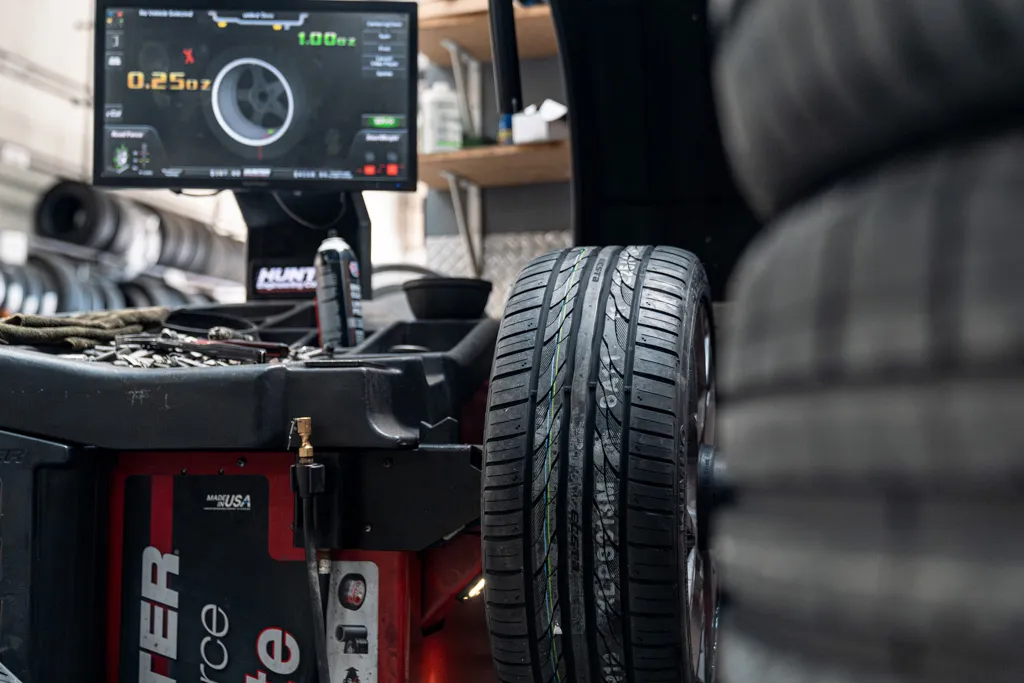
There are three main methods for tire balancing:
- Static
- Dynamic (spin-balancing)
- Road-force.
Static balancing
Static balancing involves weights being added across only one line of the tire, which is called one plane, as if the tire were a disc. This old-school method is the easiest to perform and is helpful in light-imbalance cases. Each tire is placed on a vertical supporter with a spindle tool or a bubble balancer. The heavier side will lean lower to the ground, showing that 180° across from it is where your mechanic should place a wheel weight.
Eventually, the weights will be only on one side of the wheel, which is good for those who don’t want them on the outside. However, this method may be insufficient if the weight imbalances are more complex.
Dynamic balancing
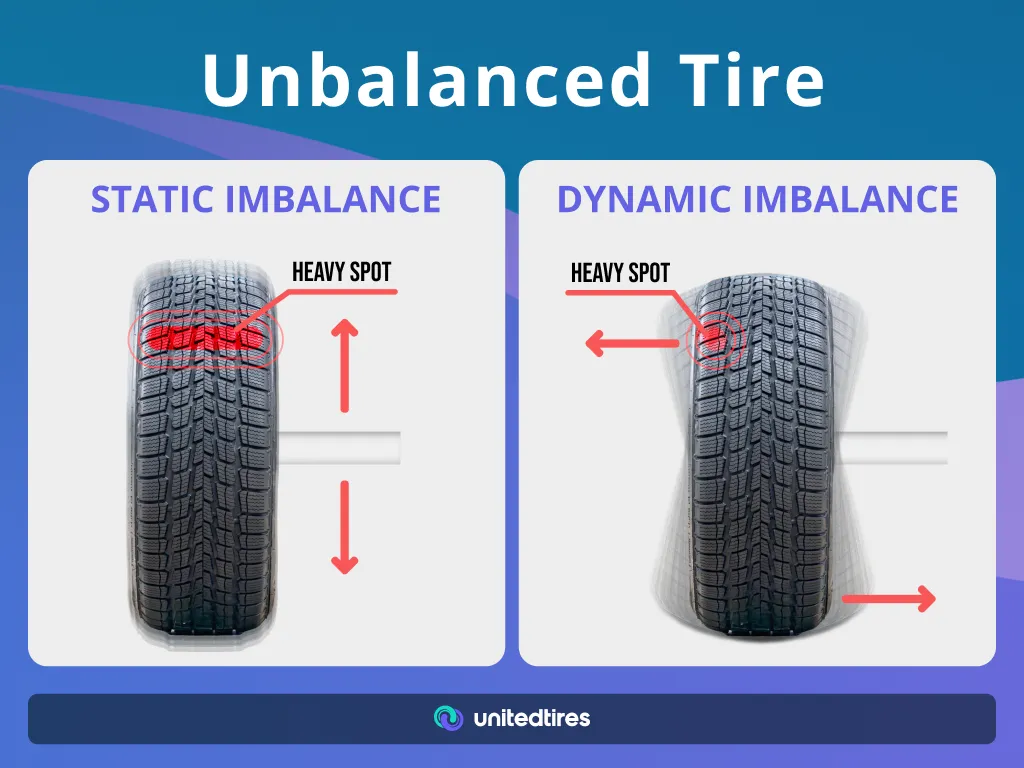
Dynamic balancing involves spreading the weights across the tire (side-to-side, up and down), which is called a dual plane. Mechanics use modern spinning computer balancers for this procedure. The technician places the wheel assembly on a machine, which then spins at certain speeds. During manufacturer tests, the speeds are usually from 10-15 mph to 55-60 mph. While the unit spins, sensors measure all balancing imperfections.
Spin balancers don’t just show the location of the point of maximum radial runout (RRO) if the tires are out of balance. They also measure how much weight your mechanic should apply to fix the situation.
In this case, both sides of the wheel are weighted, giving more precision and balance. Plus, some of the wheels have a “positive offset,” meaning most of the wheels’ surface is inboard. In such a case, the outer elements can be behind the wheel’s face, while the inner can be on the inside part.
Road force balancing
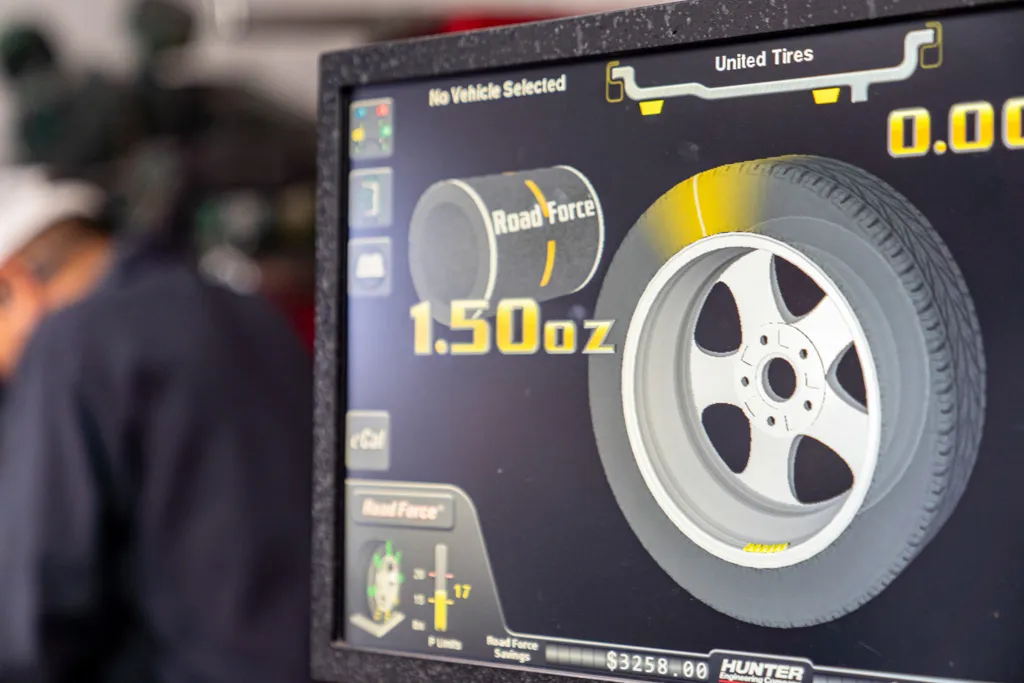
Road force balancing is one of the newest technologies that simulates real road conditions. The machine has a large roller that presses on the tire, applying the estimated weight of the vehicle on the road. This method can detect if the tires are out of balance, even in complicated cases. Such machines also have different “tolerances” that fit different types of vehicles. During the process, sensors read the pressure around the circumference, detecting irregularities.
If there is too much variation, the system shows the technician where to take readings from the wheel. The machine then determines whether the tire or the wheel is the cause of the issue. It also shows whether the two items can be re-matched to meet the chosen tolerance. If so, the system specifies the spots to work with. The technician then lubricates the bead and turns the tire on the rim to achieve the lowest level of road force variation.
The machine doesn’t always get the spots right the first time, and there are certain details the technician should know. However, this level of precision is impossible with static or dynamic balancers.
NOTE: Tire manufacturers won’t replace your tires if they are out-of-round if you have been using them for some time. However, if the tires are out of balance when you mount them for the first time, it’s better to contact the manufacturer.
Signs your tires are out of balance
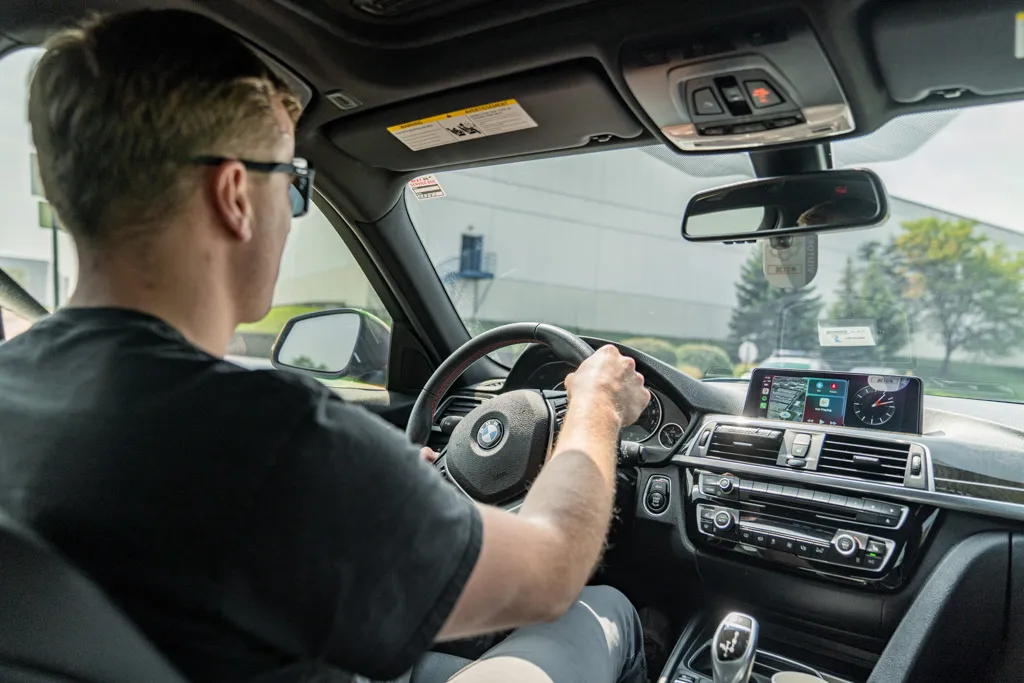
If your tires get out of balance, the main signs you’ll notice are:
- Vibration
- Uneven tire wear
- Suspension issues
- Tire/wheel runout.
Vibration
When your tires are out of balance, you may feel irregular vibration at 40-45 mph. The tremor may be too insignificant for you to notice if you only drive along quiet streets. This is because some vibrations don’t occur until the car reaches 50-70 mph.
The type and intensity of vibrations will depend on the weight and size of the wheels and the vehicle. They also differ by the level of steering/suspension sensitivity. Also, keep in mind that out-of-balance tires are not the only possible cause of vehicle vibration.
Uneven tire wear
If your tires are out of balance, they may eventually patch-wear. This type of tread wear pattern is mostly random, meaning you get uneven wear in different spots around the circumference. This happens because of the shaking that imbalanced tires cause.
If you think your treadwear looks off, check it using the penny test or a tread depth gauge. Make sure you don’t check just one spot; go around the tire and in and out. If you see a difference of 1/16” or more, your tires are wearing unevenly. And if the tread wear is in random flat spots, it’s most likely because of imbalance.
Suspension issues
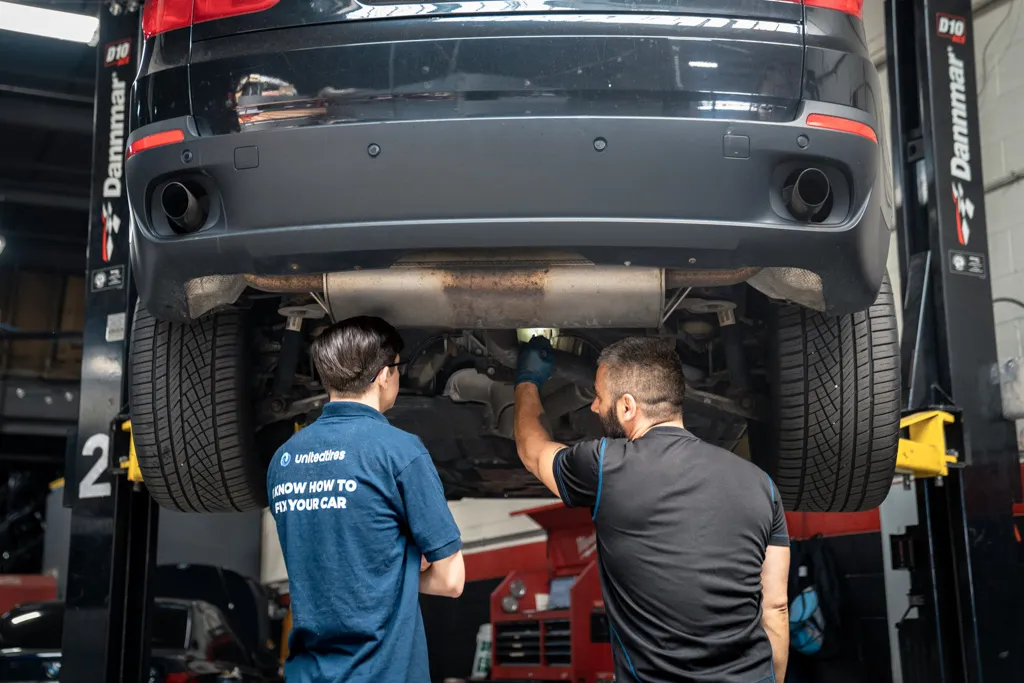
Bearings, shocks, and other elements of a car’s suspension system may suffer due to frequent vibration. This happens because of the partial loss of traction and vibrating due to your unbalanced tires.
Problems with suspension components usually cause cupping in your tires – a type of treadwear that appears in regular spots across the tire. This can also cause more vibrating and partial traction loss, which can cause more damage.
Tire runout
Tire/wheel runout is when the tire isn’t perfectly round, which is both a sign and cause of imbalance. If the wheel’s high spot aligns with the tire’s high spot, the imbalance is greater. Runout can be radial or lateral, meaning the tire may be vertically deformed or on the sides.
Tire technicians usually manage to balance runouts by match-mounting the tire on the wheel. Eventually, the high spots balance each other, and any vibrating disappears if there are no other issues. Runout should be no more than .030” to .050” for tires to operate regularly.
Tire balancing and wheel alignment – what’s the difference?
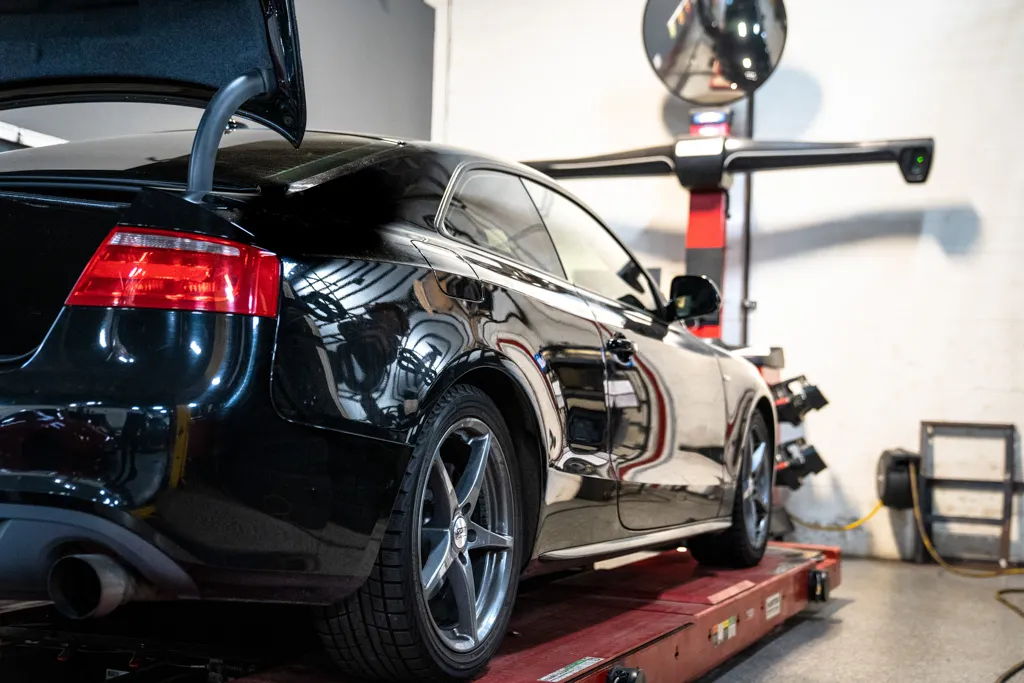
Many drivers think wheel alignment and balancing are the same, but that’s incorrect. Tire balance is achieving equal weight distribution around the tire’s circumference. Wheel alignment is adjusting the wheel’s position so it’s perfectly perpendicular to the ground and parallel to other wheels. Signs you need to check your alignment are similar to those for unbalanced wheels but may include other symptoms, as your vehicle pulls to one side.
How often should I balance my tires?
You should balance your tires every 3,000-6,000 miles (5,000-10,000km) or 1-2 years as part of your regular auto maintenance. You should also consider balancing your tires and wheels if you:
- Buy new tires, rims, or wheels
- Rotate the tires
- Repair the tires
- Notice vibration at higher speeds
- Notice uneven treadwear
- Hit a big pothole.
Remember that the balance of your tires may disappear as the tire wears and the weight distribution alters. Also, everyday stress, bad roads, hard braking and cornering, etc., may disrupt the balance over time. So, balancing new tires once you mount them may not be enough.
Frequently Asked Questions
What happens if your tires are out of balance?
When your tires are out of balance, it can lead to a less smooth and more bumpy ride, which you might notice as vibrating in the steering wheel or throughout the car. These vibrations are uncomfortable and can cause premature wear on your tires, suspension, and steering components. Keeping your tires balanced is essential for maintaining good handling, a smoother ride, and longevity of your car’s tires and associated components. Regular balancing checks are usually recommended every 3,000 to 6,000 miles or whenever you notice symptoms and can help you avoid these issues.
How do you fix a tire out of balance if you’re getting uneven tread wear?
Fixing a tire that’s out of balance is a pretty straightforward task that your local mechanic or tire shop can handle efficiently. Uneven tire wear can often be a symptom of unbalanced tires. The process involves mounting each wheel (both rear wheels and front wheels) on a specialized balancing machine that spins the tire to determine where the imbalances are. Once identified, the technician adjusts the balance by attaching small weights to the wheel rim. It’s a quick fix and generally affordable. Regular balancing can help extend the life of your tires and improve your car’s overall handling, giving you a safer, smoother ride.
What does it sound like when your tires are out of balance, and does your steering wheel shake?
When your tires are out of balance, you might not necessarily hear a distinct sound, but you will likely feel it—especially through the steering wheel. This feeling is most noticeable as a vibration or shaking sensation in the steering wheel that becomes more apparent as you pick up speed, typically around 45 to 70 mph. Depending on the severity of the imbalance, you may also feel it in the floorboard or seats. So, if you start to notice your steering wheel shaking, it’s a good idea to check in with a mechanic to get your tires balanced and ensure a smoother drive.

